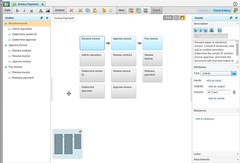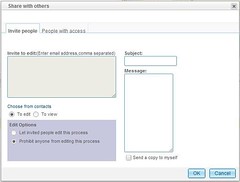Next up was a panel discussion with David Haigh of Johnson & Johnson, Sabrina Lemos of United Airlines, and Gary Kucera of Kaplan Higher Education, moderated by Charles Spina of e-Zsigma.
United Airlines has a unique project going on in one of their freight-related operations: they decided to outsource the operation in order to be able to completely remake the process and have it meet specific KPIs, but also decided to allow the existing people to bid on their own jobs. This would have the effect of shifting them out of their current ways of doing things and proposing the best possible way to do it, since they will be in a competitive bidding situation with outsiders. Lemos also spoke about the importance of getting to the real data. She did an exercise of tracing a particularly biweekly report –which took several hours to compile – up to the VP and what he reports on, then tracked what he actually reports on back down to the reports and metrics that are being gathered at the lower levels. Not surprisingly, she found that there was zero alignment: nothing in the biweekly reports were used by the VP in his report, or anywhere else in the chain of command. She spoke about using gauge R&R, walk the process, and value stream mapping techniques to analyze processes, and the necessity of coming to agreement on the meaning of things such as process start points.
Haigh spoke about accounts payable processes at J&J Canada, and how an in-depth review of those processes was triggered by someone actually forgetting to pay the electricity bill, and showing up at the office one day to find a notice that the power would be cut if the bill weren’t paid immediately: not that they didn’t have the money to pay the bill, just that the process to do so wasn’t working. Accounts payable is often one of those processes in companies that is ignored when looking at major process improvement because it’s not revenue generating, but it’s important to recognize that enormous cost savings can be found through taking advantage of early payment discount levels, and avoiding any late penalties or service disruptions. They have found that doing some amount of the work onsite where the business processes are being done is helpful, since the process participants can see what’s involved in their process overall. They use the same techniques as discussed by Lemos, plus Kaizen Blitz and some activity-based costing.
Kucera spoke about aligning the corporate and executive goals with efforts at all levels, and how Jack Welch suggested making your bonus be some percentage of your process improvement savings in order to incent people to align their behavior and metrics with the ultimate goals. He spoke about some of the modeling and display tools that they use, such as fishbone and Pareto diagrams, and how doing these early and engaging with the business management can greatly speed the process improvement efforts. In many cases, since they’re dealing with simple transactional processes, they can use fairly simple analysis tools, but have some of the more sophisticated tools and techniques available as required.
They all had examples of process improvement efforts that have had a direct customer impact. Lemos had a great example of processing freight insurance claims, where they had a metric of processing five claims per day, resulting in the claims people cherry-picking claims in order to meet their quota; enforcing first-in, first-out claims processing resulted in an immediate and dramatic improvement in customer satisfaction. Listening to her stories of their paper-based inefficiencies, where emails are printed, signed and passed around, reminds me so much of the processes in some of my financial services and insurance customers.
In all cases – and I think that this is a key criticism of Lean and Six Sigma – they’re looking for incremental process improvements, not completely disruptive reengineering that would discover new ways to do business. However, in many of today’s standard transactional processes, incremental improvement is the only alternative.





